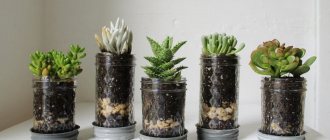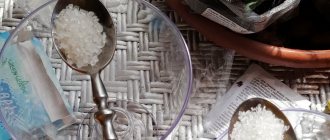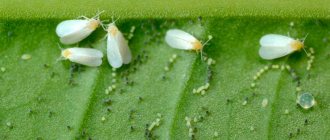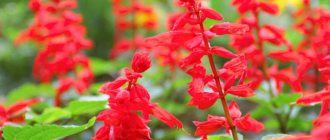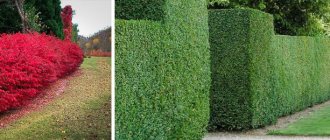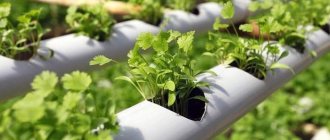Drainage is a system that maintains an optimal level of moisture in the soil by removing excess moisture. In practice, it is a layer of coarse material that is located at the bottom of the container with the plant. This system is necessary for all indoor flowers and decorative foliage crops, as well as seedlings, without exception. When growing them at home without a drainage layer, you may encounter a number of problems and difficulties in caring for them. Why is it important to have a drainage layer in a container with a plant and how to do it correctly?
Why do you need drainage for indoor plants?
Thanks to the presence of a drainage layer, indoor plants can develop much more actively. There are two types of drainage:
- moderate;
- fast.
Drainage system
When growing orchids and succulents, you can give preference to small pots with 5-6 holes. A substrate mixed with river sand and crushed brick is poured into the container. Plants that require moist soil should be planted in containers with 1-2 holes. At the same time, peat substrate is poured into the container.
Ornamental crops, the root system of which is quite well developed, fill almost the entire volume of the container. In this case, you will need a pot with a minimum number of holes. Pebbles poured into container trays are ideal as a drainage system.
The presence of a drainage layer in pots allows:
- refuse daily watering of plantings;
- facilitate the transplant process;
- prevent stagnation of moisture in the soil, acidification of the soil and rotting of the root system.
Other elements of the drainage system
In addition to bulk materials, the drainage system includes:
- the presence of drainage holes on the pot;
- loosening additives to the soil mixture, giving lightness and looseness to the soil.
Using hydroponics involves replacing drainage with a substrate. At the same time, all flowerpots must have drainage holes. It is advisable to select the dimensional characteristics and number of holes individually for each decorative crop.
The presence of a plastic and polymer container makes it possible to independently adjust the number of drainage holes. When purchasing a ceramic or terracotta pot, it is important to initially evaluate the drainage capacity, because adding holes will not be possible.
Reference! The minimum size for the drainage hole should exceed 0.5 cm. Holes that are too large should be covered with a small piece of mesh.
Why do you need a drainage layer at the bottom of the pot?
The average flower pot has at least one drainage hole at the bottom. In shape they are usually narrowed towards the bottom. Overall, these properties help prevent water stagnation. A drainage layer is needed in cases where it is necessary to correct the design defects of the pot or the properties of the substrate.
For example, all glazed ceramic pots are made with a small hole. As a rule, the substrate in them takes a long time to dry out. Therefore, a drainage layer is necessary. But plastic pots most often have a lot of large holes. If you select the container and substrate optimally, then a drainage layer is not necessary.
Which drainage is best for indoor flowers?
Automatic watering for indoor plants - do it yourself
The most popular materials for drainage systems are described below.
Crushed stone, pebbles and gravel
The use of small fractions of pebbles, crushed stone or gravel allows you to obtain an excellent drainage system for ornamental crops. The listed materials are ideal for small pots in which plants that do not need frequent replanting are grown. The disadvantages of these materials include their large mass.
Drainage for ornamental crops
Vermiculite and perlite
Perlite, along with vermiculite, has a number of positive properties, namely:
- sterility;
- low thermal conductivity;
- resistance to infection.
Due to the listed positive characteristics, gardeners often use vermiculite and perlite to create a drainage layer. Due to the presence of materials in the soil, it can be noted that there are no signs of soil acidification and the proliferation of mold and fungi.
Note! The disadvantages of materials include their high cost. You can buy perlite and vermiculite in any department of a large flower shop.
Types of drainage systems
The type of drainage for flowers determines the material from which it is made. The products used for its construction must allow water to pass through well, prevent the formation of mold and prevent the process of rotting. Depending on the material used, they are divided into:
- Expanded clay. Expanded clay is one of the most common materials used for drainage. It is sold in the same stores that sell flowers, plants and other products used by gardeners. Expanded clay is a building material that is used for insulation and sound insulation. It is sold in different sizes. Large fractions are used in pots for large plants. It is not recommended to use fine fractions, as they can get stuck in the drainage holes. Therefore, expanded clay of medium fractions is mainly used, the grain size of which is up to 20 mm. For small pots with very small plants, use quartz sand with a grain size of up to 5 mm. Expanded clay has the ability to absorb water and release it at the right time, preventing the soil from drying out. Using this property, you can impregnate expanded clay with microelements that are beneficial for plants. After 5 years of service, expanded clay deteriorates and requires replacement.
- Ceramic. When draining pots, you can use broken pieces of pottery. Broken ceramic shards are placed on the bottom of the pot with the convex side up. All this is covered with sand and then with soil into which the planting is carried out. The fragments should not be very large so that sand does not seep under them and clog the drainage holes.
- Gravel and crushed stone have good strength and other properties that are necessary for drainage layers. Disadvantages include heavy weight and inability to retain heat. Therefore, pots with such a drainage system should be placed on the south side.
- Styrofoam. It has such qualities as lightness and moisture resistance. Polystyrene foam is not subject to rotting. When using polystyrene foam drainage, you must ensure that the roots do not grow into the polystyrene foam, because they can be damaged during replanting.
- Broken brick is also used by gardeners to solve the problem of how to make drainage. It has the same qualities as expanded clay, but before use it must be crushed to remove sharp corners that can damage the roots. For more information about drainage for flowers, watch this video:
Drainage materials
What other materials can be used in the process of creating a drainage system? How can you replace drainage for flowers at home? This question often worries flower growers. The information presented below will help you choose the most suitable material to create a drainage layer.
Expanded clay
DIY drip irrigation for indoor plants
Lightweight porous building products are the most popular drainage material that can be purchased at any supermarket. To create a drainage layer, it is recommended to use the middle fraction of foamed and baked clay particles. The size of the average fraction is in the range of 5-20 mm.
The main advantage of expanded clay is the ability to accumulate moisture and the ability to release it as needed. The presence of expanded clay in the soil allows you not to worry about maintaining optimal water balance. In addition, experienced gardeners highlight the following advantages of drainage material:
- low cost;
- small weight;
- long service life.
Note! Expanded clay is endowed with the ability to change the acid-base balance of the soil. This feature can negatively affect the health of flowers.
Agronomists advise covering the soil surface with a small layer of expanded clay in order to eliminate overheating of the earth and prevent excess evaporation. At the same time, it is important not to cover the surface of the earth with a large layer of expanded clay, so as not to disrupt air exchange and not provoke the appearance of mold.
Broken brick
Red brick contains clay. That is why such a material will be an excellent analogue of expanded clay. Most often, finding red brick in a private yard is not difficult. Gardeners often use it to create a drainage system for indoor plants.
Drainage
Ceramic shards
Ceramic shards, along with fragments of dishes, are the most accessible material for creating a drainage system. The main advantages of broken dishes include:
- small mass;
- lack of ability to absorb and retain moisture.
Note! The disadvantage of this material is the presence of sharp corners. You can get injured while working with shards. It is best to carry out the process while wearing thick gloves.
What is drainage and what is it for?
Most houseplants require a soil composition that provides approximately 15% air, 50% solids and 35% water. Only a properly constructed drainage layer can create such optimal conditions.
This is explained by the fact that with excessive watering, the same percentages of air content that are vital for flowers are displaced. When there is no oxygen in the soil, pathogenic bacteria begin to develop, the root system rots, and the flower begins to wither.
Drainage for flowers, photos of various types of which are presented in the article, precisely ensures the removal of excess moisture and ventilation of the roots.
To lay the drainage layer, you can use various materials, such as gravel, foam plastic or any synthetics, expanded clay, moss, crushed stone, charcoal, broken brick, river sand, peat and others. Next, the most commonly used materials will be discussed in more detail.
An important quality of drainage is good water throughput, chemical inertness, resistance to rotting and mold.
Drainage for flowers has different fractions, which are selected depending on the plants.
How to make drainage for indoor plants
Favorable days for replanting indoor plants
Once the gardener has decided which drainage is best for indoor flowers, you can begin preparing planting containers and laying a drainage layer.
Step-by-step installation process
Before starting work, all tools that will be used in the process of laying drainage for indoor plants with your own hands must be disinfected.
Then they proceed in the following sequence:
- Containers for planting flowers are wiped with a dry towel.
- In the case of using crushed stone or expanded clay, it is worth washing the material under running water, disinfecting it and, covering it with a small layer of paper, drying it outside.
- The dried material is distributed in a small layer into containers for planting. When choosing the thickness of the drainage layer, it is worth considering the type of plants that you plan to grow. If there are a large number of drainage holes at the bottom of the container, you can limit yourself to 1-1.5 cm of drainage layer. If only 1 hole is made on the pots, it is recommended to increase the thickness of the bedding to 3 cm.
- The drainage material is evenly distributed in the container.
- When using fine fraction drainage, 15 mm of soil is poured on top of the material. Drainage for coarse indoor plants involves adding a small amount of coarse sand.
At the end, soil is poured into the pots and seeds/seedlings are sown.
What are drainage holes and why are they needed?
The pot must have a way
to drain excess water. To do this, holes are made at the bottom of the pot, which are called drainage holes.
Their number can vary from one to one and a half dozen depending on the characteristics and needs of the flower.
If there are no holes in the pot, then you can make them yourself without any problems. And humidity control
soil begins already at this stage: the thicker the holes are, the faster the water will leave the pot, and the more oxygen the root system will receive.
The number of holes has a similar effect on the removal of moisture and enrichment of soil with oxygen.
Drain hole
Over time, it can become clogged with soil mixture, drainage or roots. Therefore, it needs to be checked periodically, especially when there is only one. If you notice that the hole is clogged, it should be cleaned. A wooden or other stick will do for this.
What cannot be used as drainage?
Not every material can be used to create a drainage layer. It is unacceptable to use as drainage:
- nut shell;
- tree bark;
- eggshell.
Organic materials contribute to the formation of mold in the pot. The material has a negative effect on the acidic composition of the soil, which can provoke the development of various diseases.
Note! It is not recommended to use sand as a drainage system, as it causes clogging of the holes on the surface of the bottom of the pot and causes rotting of the root system. If you use pebbles, it is recommended to wash off the grains of sand.
No less dangerous for plants is marble chips, which, when interacting with water, contribute to a change in the acid composition and increase alkalinity in the soil.
Walnut crumbs – not used in the drainage system
Common Mistakes
When installing drainage, inexperienced gardeners often make mistakes that lead to disease and even death of plants. And the most important of them is the use of inappropriate materials. There are several of them:
- sand
- tree bark, tea leaves, nut and egg shells
- marble and granite chips.
So, for example, sand at the bottom of a flower pot will not only not drain away, but will also retain water, preventing it from evaporating. And a violation of the water balance will lead to acidification of the soil and the development of putrefactive processes, which in turn will negatively affect the health of the plant. In addition, sand can completely clog the drainage hole.
Tree bark, tea leaves, nut and egg shells are components of animal and plant origin that may contain a number of pathogens. Because of this, there is a high probability of mold and other fungal diseases developing in the substrate.
Shards of granite and marble enter into a chemical reaction with water and can change the acid-base balance of the soil.
Another common mistake made by beginners is letting water stagnate in the tray of a flower pot. The fact is that if excess moisture is not drained, the drainage system simply will not work. For the vast majority of plants, the tray must be emptied of excess water 30-40 minutes after watering.
Here, perhaps, are all the nuances of arranging proper drainage in a flower pot.
Errors in the manufacture of drainage
Inexperienced gardeners often make mistakes when creating a drainage layer. Below are the main mistakes to avoid when laying drainage:
- Ignoring the advice not to use river sand leads to clogging of the drainage holes with sand grains.
- The use of too large fractions of available material does not promote moisture retention. The liquid flows into the trays.
- The use of natural materials as drainage leads to rotting of the root system of plants.
- The health of green spaces may deteriorate if polystyrene foam is used to perform drainage functions.
What else can replace drainage? Available means
If it is not possible to purchase industrial-made drainage, you can use improvised materials instead. Suitable for this:
- crushed stone;
- broken brick;
- Styrofoam;
- river stones.
In some respects, the above materials are inferior to industrial ones, however, they are successfully used by florists.
Attention! Use of available raw materials as drainage should be done with caution, because in this way pathogens of fungal and bacterial diseases can be introduced into the soil.
Charcoal
In addition to the function of removing and absorbing excess moisture, charcoal enriches the soil with minerals and disinfects it, preventing rotting, and absorbs salts. It is lightweight and does not affect the weight of flower pots.
Charcoal is placed on the bottom of the planting container in a layer of about 2 cm, and only the coarse fraction is used.
Crushed stone, gravel, river stone
These materials are publicly available, but you need to independently calibrate them in size, filter out debris and pre-rinse them in water. Their disadvantage is their high specific gravity and high thermal conductivity. Therefore, they cause hypothermia of the roots of indoor flowers at low temperatures or overheating when placing pots on window sills above radiators. To improve thermal insulation, it is necessary to lay a layer of expanded clay, perlite or other porous material on top of crushed stone or gravel.
Broken brick
The properties of broken brick are similar to fragments of ceramics. Before using it as drainage, the sharp edges are blunted to prevent damage to the roots. After this procedure, it is washed from dust and debris.
Broken brick is used for plants that store moisture in leaves and stems and are able to do without holes in the bottom of the planting container.
Styrofoam
Polystyrene foam is a lightweight porous material. Moreover, it is public. It removes excess moisture without absorbing water, therefore it is inferior in quality to perlite and expanded clay. However, due to its thermal insulation properties, polystyrene foam maintains the necessary temperature for plant roots.
Attention! It is better to create a drainage layer from polystyrene foam for those indoor plants that require frequent replanting or have an underdeveloped root system. Over time, the roots of the plant grow into the foam, after which it is impossible to free them without mechanical damage.
Charcoal
Charcoal is well suited for soil drainage, performing the functions of a natural fertilizer and antiseptic, not only preventing putrefactive processes, but also adsorbing salts and regulating the soil moisture saturation.
Like many, charcoal drainage for flowers perfectly absorbs and retains liquid and minerals until the moment when the soil dries out and needs moisture. Charcoal is a neutral, porous, inert and lightweight material.
For drainage, it is laid out on the bottom of the flowerpot in a layer of 2 cm. It is advisable to take large fractions or those that will not pass through the drainage holes of the pot.
Other elements and basic requirements
What material is used if the necessary elements are not at hand? If you cannot find any of the above materials, do not worry, there is always a way out. Use what you have on hand. So, what can replace drainage?
- Crushed stone and gravel. Drainage made from these stones perfectly replaces the traditional one. The only drawback is that these elements significantly make the pot heavier. So if you take a small pot or one that you won’t often move from place to place, this material will work best.
- Aquarium stone. Such stones are a good alternative, but the price is quite high. But if you have this material, why not use it?
- Styrofoam. Foam plastic perfectly replaces the usual elements. It meets the necessary requirements, and besides, it can be found almost everywhere. People tend to store boxes of appliances or household appliances, so there is no better budget option for drainage. True, they don’t crumble it into a pot, but cut it into cubes and lay it in a layer of several centimeters. Of course, a significant disadvantage can be damage to the root system if the roots of the plant entwine the foam.
- Brick. You can also replace traditional materials with broken bricks. This is a natural material with the necessary properties. However, before placing it on the bottom of the pot, sharpen the edges, otherwise the roots of the plant may be damaged. White brick is better suited for use rather than red.
We also mentioned the basic requirements earlier. It is necessary to ensure that the drainage has the necessary properties and does not harm the plant. This will be enough to achieve the desired result.
